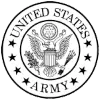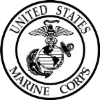Available 24/7
Professional Instruction
Free Training Materials






Course Details
The Querying Data with Transact-SQL - 20761 course is a 5-day course that is designed to teach students the Transact-SQL language that is used all SQL Server-related disciplines including: Database Administration, Database Development and Business Intelligence. The course will be of benefit for students in the following roles: Database Administrators, Database Developers and BI professionals
Topics covered in the course include:
- Describing key capabilities and components of SQL Server 2016.
- Describing T-SQL, sets, and predicate logic.
- Writing a single table SELECT statement.
- Writing a multi-table SELECT statement.
- Writing SELECT statements with filtering and sorting.
- Describe how SQL Server uses data types.
- Writing DML statements.
- Writing queries that use built-in functions.
- Writing queries that aggregate data.
- Writing subqueries.
- Creating and implementing views and table-valued functions.
- Using set operators to combine query results.
- Writing queries that use window ranking, offset, and aggregate functions.
- Transforming data by implementing pivot, unpivot, rollup and cube.
- Creating and implementing stored procedures.
- Adding programming constructs such as variables, conditions, and loops to T-SQL code.
Target Student:This course is designed for Database Administrators, Database Developers, and Business Intelligence professionals.
Students should possess the following experience before attending the course:
- Working knowledge of relational database
- Basic experience with the Microsoft Windows operating system and its core features
Certification Note:This course covers all the topics needed to adequately prepare for exam 70-761.
Section 1: Introduction to Microsoft SQL Server 2016
This section introduces SQL Server, the versions of SQL Server, including cloud versions, and how to connect to SQL Server using SQL Server Management Studio.
Topics
The Basic Architecture of SQL Server
SQL Server Editions and Versions
Getting Started with SQL Server Management Studio
Lab: Working with SQL Server 2016 Tools
Section 2: Introduction to T-SQL Querying
This section introduces the elements of T-SQL and their role in writing queries, describes the use of sets in SQL Server, describes the use of predicate logic in SQL Server, and describes the logical order of operations in SELECT statements.
Topics
Introducing T-SQL
Understanding Sets
Understanding Predicate Logic
Understanding the Logical Order of Operations in SELECT statements
Lab: Introduction to Transact-SQL Querying
Section 3: Writing SELECT Queries
This section introduces the fundamentals of the SELECT statement, focusing on queries against a single table.
Topics
Writing Simple SELECT Statements
Eliminating Duplicates with DISTINCT
Using Column and Table Aliases
Writing Simple CASE Expressions
Lab: Writing Basic SELECT Statements
Section 4: Querying Multiple Tables
This section explains how to write queries which combine data from multiple sources in SQL Server. The section introduces the use of JOINs in T-SQL queries as a mechanism for retrieving data from multiple tables.
Topics
Understanding Joins
Querying with Inner Joins
Querying with Outer Joins
Querying with Cross Joins and Self Joins
Lab: Querying Multiple Tables
Section 5: Sorting and Filtering Data
This section explains how to enhance queries to limit the rows they return, and to control the order in which the rows are displayed. The section also discusses how to resolve missing and unknown results.
Topics
Sorting Data
Filtering Data with Predicates
Filtering with the TOP and OFFSET-FETCH Options
Working with Unknown Values
Lab: Sorting and Filtering Data
Section 6: Working with SQL Server 2016 Data Types
This section explains the data types SQL Server uses to store data. It introduces the many types of numeric and special-use data types. It also explains conversions between data types, and the importance of type precedence.
Topics
Introducing SQL Server 2016 Data Types
Working with Character Data
Working with Date and Time Data
Lab: Working with SQL Server 2016 Data Types
Section 7: Using DML to Modify Data
This section describes the use of Transact-SQL Data Manipulation Language to perform inserts, updates, and deletes to your data.
Topics
Inserting Data
Modifying and Deleting Data
Lab: Using DML to Modify Data
Section 8: Using Built-In Functions
This section introduces the use of functions that are built in to SQL Server Denali, and will discuss some common usages including data type conversion, testing for logical results and nullability.
Topics
Writing Queries with Built-In Functions
Using Conversion Functions
Using Logical Functions
Using Functions to Work with NULL
Lab: Using Built-In Functions
Section 9: Grouping and Aggregating Data
This section introduces methods for grouping data within a query, aggregating the grouped data and filtering groups with HAVING. The section is designed to help the student grasp why a SELECT clause has restrictions placed upon column naming in the GROUP BY clause as well as which columns may be listed in the SELECT clause.
Topics
Using Aggregate Functions
Using the GROUP BY Clause
Filtering Groups with HAVING
Lab: Grouping and Aggregating Data
Section 10: Using Subqueries
This section will introduce the use of subqueries in various parts of a SELECT statement. It will include the use of scalar and multi-result subqueries, and the use of the IN and EXISTS operators.
Topics
Writing Self-Contained Subqueries
Writing Correlated Subqueries
Using the EXISTS Predicate with Subqueries
Lab: Using Subqueries
Section 11: Using Set Operators
This section introduces the set operators UNION, INTERSECT, and EXCEPT to compare rows between two input sets.
Topics
Writing Queries with the UNION Operator
Using EXCEPT and INTERSECT
Using APPLY
Lab: Using SET Operators
Please check the course description to find prerequisite information.
MOC On-Demand: 20761-Querying Data with Transact-SQL
On-Demand Training Course
90/month licence
- 24/7 Access
- Hands-On Practice Exercises
- Free Repeats
- Professional Instruction
Testimonials
This was the class I needed.
The instructor Jeff took his time and made sure we understood each topic before moving to the next. He answered all of our questions, and I don't know about the rest of the students, but was very pleased with this experience.
I finally understand how to use Excel.
-Amanda T (Yale New Haven Hospital).
Great class!
We were able to cover a lot of information in one day without getting overwhelmed.
-Maria R (Microsoft).
Free Repeats
Learn At Your Pace
No Travel
Professional Instruction
Affordable Pricing
Group Discounts

